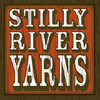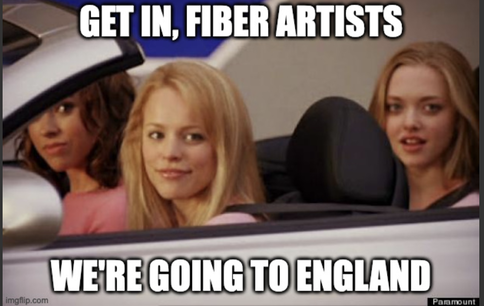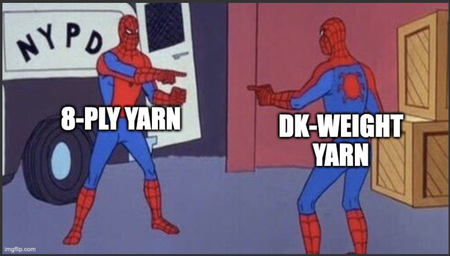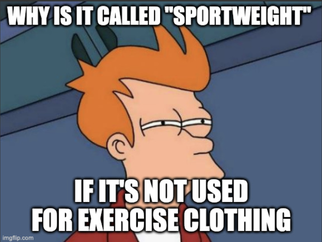|
Worsted-weight yarn - also known as #4 yarn - is tied with fingering-weight yarn for the most popular yarn weight in our shop. It’s where most beginners start, and it’s got a huge range of options available.
But what does “worsted” even mean? What did it ever do to get so harshly judged? Read on and find out! According to the Craft Yarn Council guidelines, a worsted-weight yarn might also be known as “afghan yarn” or “aran-weight yarn.” (While aran-weight is generally in this category, it’s actually not exactly the same as a worsted-weight; it’s slightly thicker, but not enough to qualify as a bulky-weight yarn.) In crochet, you can expect a worsted-weight yarn to get you about 11-14 single crochet stitches in 10 cm / 4”; in knitting, it’ll get you 16-20 stitches in stockinette in 10 cm / 4”. The average hank of worsted-weight yarn runs between approximately 146-210 meters / 160-230 yards in 100 grams / 3.5 ounces. In the shop, we have a lot of options for you in worsted-weight yarn: Berroco Vintage, Malabrigo Ríos, Noro Haunui, and Ella Rae Cozy Alpaca Worsted, just to name a few. So where does the term "worsted" come from, anyway? This one is fairly easy to trace. Back in the Middle Ages, a village near Norfolk became a textile center known for two things: long-fleeced sheep and a fabric woven from the strong, smooth, dense yarn that was spun from those sheeps’ fleece. Various sources agree that this village was known for the quality and output of its textile goods for over 600 years. That village’s name? Worstead. How did it come to apply to a specific yarn weight? That’s a little harder to suss out. It seems to come from the fact that the fiber and yarn produced in Worstead were composed of smooth, denser wool with a longer fiber length. After the wool industry was well-established in Worstead, the type of yarn the village produced became generally known as “Worstead yarn”... and over the years, the spelling changed to “worsted.” But wait, you might ask. If there’s “Worstead / worsted” yarn… that implies that there’s a different term for a different type of yarn, then? And the answer is yes - you’re absolutely correct about that. Without going too deep into the weeds on this, commercial yarn comes in many different forms and structures, but the way it’s spun generally falls into one of two categories: worsted-spun and woolen-spun. Worsted-spun yarns are like Berroco Vintage or Malabrigo Ríos; I refer to them as the brownies of the yarn world. They’re smooth, dense, and pretty easy to find. Woolen-spun yarns are like Harrisville Highland or Brooklyn Tweed Shelter, and I refer to them as the meringues of the yarn world. They’re lightweight, lofty, and somewhat more difficult to find these days. (You can get more information and see the difference between these two types of yarn in an article by Jillian Moreno over at Modern Daily Knitting if you want to learn more.) Taking all that into consideration, then, it seems like the type of yarn originally produced in Worstead gave its name first to a spinning technique and lightweight garment fabric, and that name then got applied over time to describe a specific size of yarn. It’s odd to me that it wasn’t pulled into use for the smaller size of yarn you’d typically use for durably woven clothing fabric, but maybe it just became good enough as a descriptive word, and that was that. Want to read more about all the different uses of the term “worsted”? Read more about it over on HandwovenMagazine.com in an article by Susan E. Hornton. Next week, we’ll wrap up this series of blog posts with a quick look at bulky and jumbo yarns, then take a break for a couple of weeks.
0 Comments
IDK, what's DK?
Sport-weight and DK-weight yarn are the most-confused yarn weights in the shop, and there’s a lot of overlap between them. You sometimes even see that the yarn company has labeled the yarn one way and I’ve chosen to shelve it with a different category of yarn (Malabrigo Arroyo, I’m looking at you in particular). According to the Craft Yarn Council, DK-weight yarn is a yarn that works up at 12-17 single crochet stitches per 10 cm / 4” or 21-24 stitches in stockinette per 10 cm / 4”. It is sometimes referred to as “light worsted” as well. An average hank of DK-weight yarn is 229 - 297 meters per 100 grams, or 250-325 yards per 3.5 ounces. In the shop, our DK-weight selection includes Berroco Spree, Berroco Vintage DK, Ella Rae Eco Tweed, and West Yorkshire Spinners ColourLab DK. That’s all well and good, you might say. But let’s cut to the chase - what does “DK” stand for? DK is an abbreviation for “double knitting.” You may have run across this in the context of a knitting technique that produces a double-thick fabric (sometimes with knitted-in 2-color designs that are reversible and switch colors from one side to the other). In the case of the term applied to yarn weights, however, it has more to do with the physical structure of the yarn. One of our most popular sock yarns (yes, true sock yarns) is West Yorkshire Spinners’ Signature 4-Ply. If you pick this yarn apart into its structural components, there are indeed 4 singles plied together to make one yarn. In Great Britain and many of the former and current countries of the British Commonwealth, you’ll often see fingering-weight yarn simply referred to as “4-ply.” DK-weight yarn is now often referred to as “8-ply” in those same areas… which is double the plies you find in the 4-ply yarn. Fingering-weight held double is thus - (4 plies x 2 strands) = 8-ply. When you hold it double to knit it at a larger gauge… you get “doubled knitting [or crocheting] yarn.” And if you’ve ever held fingering-weight double to substitute in for another weight of yarn, you’ll often find (depending on the original skein) that it’s about the same as a heavy DK-weight yarn. And by and large, that seems to be about the entire story. Sidebar - crocheters in the audience are likely crying foul that this shows the bias inherent in the system towards knitters. And you’re not wrong. However, it’s likely that this was the result of where crochet in Europe and North America was focused in the 19th- and early 20th-centuries: trims and laces. These pieces were often worked in fine thread, not larger yarns - larger yarns were generally reserved for knitting, or sometimes weaving. This tendency to distinguish between which yarns can be used for which crafts might also be reflected in any experience where you’ve heard a crocheter ask if the yarns in a given store can be used for crochet. In today’s yarn world, yes, of course! But crocheting with materials thicker than crochet thread - at least in the American and European practice of crochet - is a relatively recent development. Can you imagine knitted gym shorts? (Or, what does “sport-weight” mean?)
We’re going to move up the yarn weight scale a notch at a time for the duration of this series, and today we arrive at the “sport-weight” designation. The Craft Yarn Council defines sport-weight yarn as a yarn that achieves a crocheted gauge of 16-20 single crochet in 10 cm / 4” or a stockinette gauge of 23-26 stitches in 10 cm / 4”. In comparison to the fingering-weight yarns we looked at last week, you can see that this is a pretty limited gauge range - that will be the case for most yarn weights moving forward. An average hank of sport-weight yarn is going to come in somewhere between 297 - 348 meters per 100 grams, or 325 - 380 yards per 3.5 ounces. Examples of sport-weight yarns that we carry in our shop include Kelbourne Woolens Mojave, Juniper Moon Farms Patagonia, and Malabrigo Arroyo. Given American culture’s semi-obsession with sports and athletics and fitness, it’s a natural question to wonder what connection this type of yarn has with that world. Preppy tennis sweaters of a certain era or vintage bathing suits may be the only thing you can conjure up in your mind that would have perhaps been crocheted or knitted garments, but would that really have been enough to name an entire yarn category after sports? Short answer: the language and culture have shifted, and the popular meaning of “sport-weight” is now very different from what the term was originally coined to mean. There are all sorts of origin stories for the term “sportswear” depending on which sources you consult, but in general, it seems like the best description is that sportswear started out as collections of mix-and-match separates that were derived from types of actual clothing pieces worn by athletes. These separates were more relaxed than the typical silhouettes of clothing of the very early 20th century, less strictly relegated to specific activities or times of day, and - for women in particular - allowed them to dress themselves fashionably and easily without requiring the assistance of a maid. I found particularly interesting examples in an article attributed to Patricia Campbell Warner on LoveToKnow.com, titled simply “Sportswear.” Think of trousers, button-up shirts, cardigans, tunics, and turtleneck shirts. These separates were also made of materials that were easier to care for than more formal outfits, such as cotton, wool, and linen. Over the past few decades, the term “sportswear” has become more specifically linked to clothing you wear while participating in sports - in the US, we might call it “athleticwear,” or even “athleisure-wear” if you’re running errands in the same clothes you would wear to a yoga class or strength-training session. What used to be “sportswear” is now probably better called “business casual.” So what does this all have to do with yarn? Finer-gauge crocheted and knitted clothing is often perceived as dressier or appropriate for a wider range of settings - think of super-bulky pullover sweaters versus twin-set cardigans and shells. So the yarn that we now call “sport-weight” would originally have been used to make pieces of clothing that would have been appropriate to both pay a social call to an acquaintance and attend less rigidly formal social events, but not appropriate in an important business meeting or a high-society gathering. As a note, another name for this yarn weight is “baby yarn.” Again, “baby yarn” can be used to describe a number of characteristics of yarn but is normally used today to describe yarn that is both soft and easily washable. The use of the term “baby yarn” specifically tied with this size of yarn most likely has more to do with the development of easy-care yarns in acrylic and other synthetic materials in the period following World War II. As sportswear moved from natural materials to newly-developed synthetics, the same marketing push that encouraged homemakers to purchase clothing and home linens that could simply be thrown in a washing machine at any time also moved into the yarn market. Why risk making an heirloom sweater out of wool that could accidentally be felted or attacked by moths when you could pick up a skein of yarn specifically formulated to go in the washer any time the baby threw up on it or crawled through dirt? It’s fascinating to see what historical trends continue to play out in our use of language - stay tuned, as our next two installments will also have a lot to do with this idea! |
AuthorLindsey Spoor is the owner of Stilly River Yarns in Stanwood, WA. Archives
April 2024
Categories |
Reach out! |
Come visit us at our brick-and-mortar shop in Stanwood!
NEW LOCATION STARTING JULY 16, 2024:
7104 265th St. NW Suite 120 Stanwood, WA 98292 Shop phone: (360) 631-5801 Email: [email protected] Text: (515) 833-0689 |
|
|
Proudly powered by Weebly
Stilly River Yarns LLC
Copyright © 2024
Copyright © 2024




 RSS Feed
RSS Feed